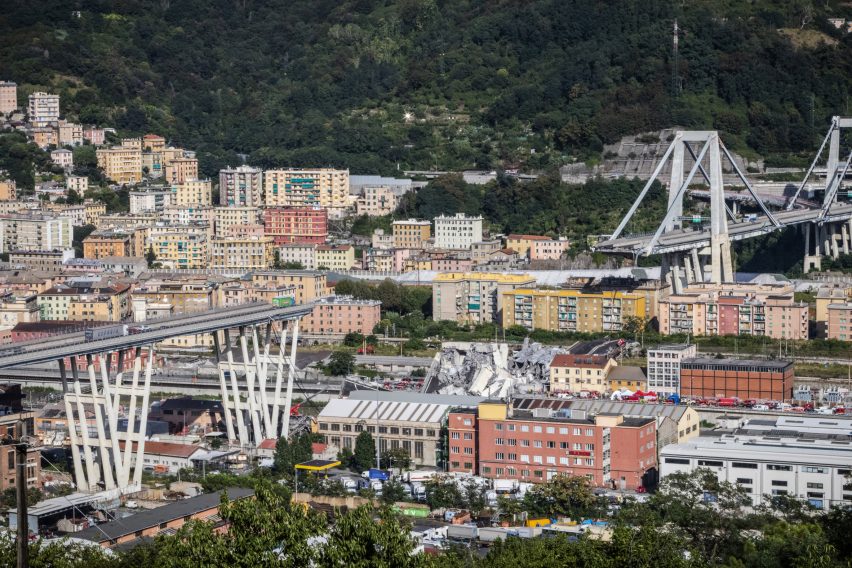ΓΙΑΝΝΗΣ ΧΡΥΣΟΥΛΑΚΗΣ

The Morandi Bridge (Ponte Morandi) is part of the Polcevera viaduct, on the A10 motorway in Genoa Italy. It was built between 1963 and 1967, and was named after its designer, Riccardo Morandi, a famous Italian civil engineer and Professor of bridge design at the University of Florence and the University of Rome La Sapienza. The 203m long third (from east) span of the cable-stayed section of the bridge collapsed on 14 August 2018.
Riccardo Morandi (1902 - 1989) was notorious in the 1960’s for his “interesting” use of prestressed concrete in cable-stayed bridges. His bridges are characterised by very few stays: the Morandi bridge has the absolute minimum number (only two stays per span, one at each side of the pier), constructed from prestressed concrete, rather than the usual steel cables. The very small number of stays gives no redundancy to the structure (if one stay fails, the whole span fails – as it did on 14/8/2018), while prestressed concrete stays (especially with the technology of the 1960’s) suffer from intense creep of the concrete, causing critical loss of tension in the prestressing tendons, which accentuates stress fatigue of the tendons leading to the collapse of the whole span when one stay fails. Fortunately, as each span is structurally independent (separated with joints), the collapse did not extend to the adjacent spans of the bridge.
Although Morandi’s bridges often look impressive, they are certainly less safe than bridges with multiple steel stays (like the Rion-Antirion bridge) and have therefore been of little influence in civil engineering bridge design. The collapsed Morandi bridge has been subject to almost continual restoration work since the 1970s, due to an incorrect assessment of the effects of concrete creep. This oversight resulted in excessive deferred displacement of the vehicle deck which was neither level nor horizontal, undulating in all three dimensions. From 1990 onward, the easternmost pillar of the bridge had its stays strengthened by flanking them with external steel cables. Two years ago, the Morandi bridge design had been described as a "failure of engineering" due to escalating maintenance costs to keep it safe. [The Guardian, 14 August 2018: Genoa bridge collapse: 'Unusual' span had seen frequent repair work, by Matthew Taylor].
Unfortunately, it was not kept safe enough …..










Δεν υπάρχουν σχόλια:
Δημοσίευση σχολίου